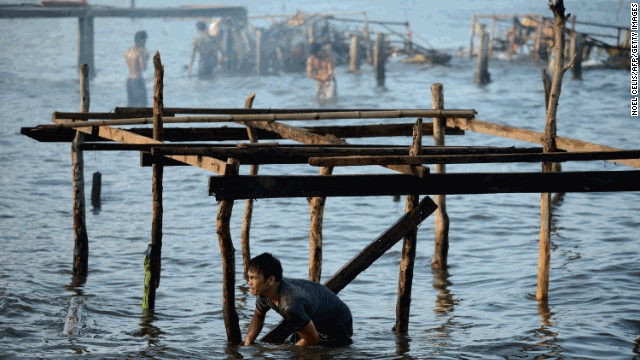In the first two weeks of November, Typhoon Haiyan formed and hit the Philippines. The Typhoon was formed in a low-pressure region on November 3, 2013 and rapidly intensified to a Category 5 super typhoon by two days later. It continued to strengthen until the wind speed was over 190 mph, making it the fourth most intense cyclone ever. When it hit the Philippines, it became the strongest cyclone ever recorded that made a landfall. The storm hit the Philippines, causing major devastation. It also struck other areas including Southern China, Vietnam, and Micronesia.
The devastation was greatest in the Philippines. The United Nations has estimated that about 11 million people in this country have been affected, and over 5,500 people have been killed. The total financial value of the damage caused by the hurricane is projected to be around $1.4 billion.

Overall Path of the Typhoon.
Sources: United Nations; MapAction
The Typhoon passed the center of the major Philippines towns and cities such as Guiuan, Tacloban, Ormoc, Cadiz, and Busuanga. In Guiuan, most of the fifty thousand residents have lost their homes. In Busuanga, food and water supplies are short and there is extensive damage to housing and infrastructure. In Cadiz, five thousand houses were destroyed by the storm.
Tacloban City was struck by the full force of the storm. The bustling city with a population of over two hundred thousand had many of its buildings destroyed. In particular, the coastline was hit hard, with most buildings destroyed. The airport was completely destroyed except for the runway. Many areas were flooded with water due to storm surges, which caused more damage than the high wind speeds of the typhoon. Many thousands of people waited at the airports in the hope that they could be evacuated from the city, but the evacuations are taking place slowly. Many residents became aggravated, and the military was sent to the city to get the situation under control. There has been a lot of looting in the city, as well as attacks on relief trucks to get access to food. In addition, there have been raids on government food stockpiles. Security checkpoints are now in place all over Tacloban. Although most other settlements have not been hit as hard as Tacloban was, those that were affected still suffer from the same problems as Tacloban does.

Path of the Typhoon through the Philippines.
Numerous countries have provided the Philippines with assistance during this time of need. Countries providing aid include the United States, China, Britain, Canada, South Africa, Japan, South Korea, Saudi Arabia, South Korea, Norway, Australia, and Switzerland. These countries and others have provided cash donations, supplies, and military personnel to assist with the recovery. Humanitarian efforts had commenced by November 9, although many affected places remain isolated and lack communication with the outside world.
The typhoon reached the Hainan Province in Southern China and caused a lot of damage, killing six people. The economic losses in Hainan Province were about $800 million. Furthermore, there were heavy winds and rain in Guangxi Province. This inclement weather affected 1.2 million people, and caused financial losses of around $45 million. Nine hundred homes were destroyed, eight and a half thousand homes were damaged, and 25,500 hectares of crops were lost. Overall, roughly 3 million people were affected by the storm in Southern China.
As the Philippines, China, and other countries recover from this disaster, the people that had their homes damaged or destroyed will have to rebuild their lives and find new jobs. We can only wish them the best of luck and help them in any way we can.





























